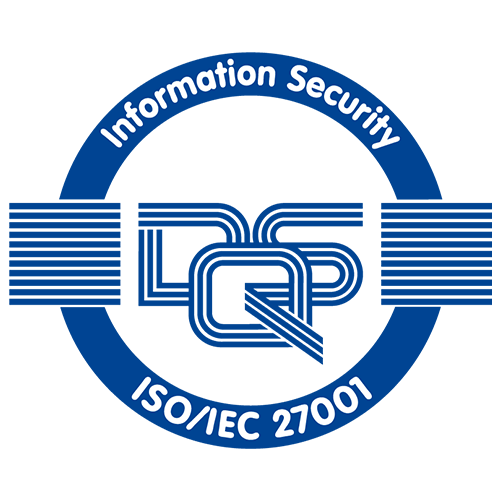How to start a Multi-Asset FX/CFD Brokerage in 2024?
The global retail trading market is set to grow rapidly, driven by technological advancements, evolving financial markets, and a growing appetite for alternative investments. 2024 presents a unique opportunity to launch a multi-asset FX/CFD brokerage, especially for introducing brokers (IBs), employees of existing brokerages, or entrepreneurs with a background in finance, fintech, or technology.
This guide outlines the key steps, infrastructure, and considerations for starting a successful FX/CFD brokerage in 2024.
1. Define Your Target Market
The first step is identifying your target market. Define the regions or countries you’ll serve, whether you’re catering to retail or institutional traders (or both), and if you’ll offer specialized services like margin, algorithmic, prop, or social trading.
In 2024, key markets include Asia, the Middle East, Africa, and Latin America, where interest in FX and CFDs is growing significantly. Understanding your geographical scope will also help you navigate licensing and regulatory requirements.
2. Regulatory Licensing and Compliance
Compliance is one of the most critical aspects of launching a brokerage. Depending on where you plan to operate, you’ll need the appropriate licenses from regulators such as the Financial Conduct Authority (FCA) in the UK, Cyprus Securities and Exchange Commission (CySEC), or Australian Securities and Investments Commission (ASIC).
While some start by registering in unregulated jurisdictions, it’s becoming harder to be taken seriously without proper regulation. Operating without a robust license could limit your access to clients, banks, and partners.
Different jurisdictions have varying licensing requirements, which often include minimum capital, proof of financial stability, and Anti-Money Laundering (AML) and Know Your Customer (KYC) processes. For example, market-making brokers may need a minimum of €125,000 in operating capital.
Some jurisdictions like Mauritius, Seychelles, and Vanuatu offer more accessible regulation and banking services, making them worth exploring. As your brokerage grows, acquiring multiple licenses will help expand your market reach.
3. Selecting a Trading Platform
Choosing the right trading platform is essential to attracting and retaining clients. The platform should offer an intuitive interface, real-time market data, charting tools, and support for automated trading strategies.
Leading platforms in 2024 include MetaTrader 5 (MT5), cTrader, DXtrade, and Match-Trader. Each offers multi-asset trading across forex, commodities, indices, and cryptocurrencies. MT5 is popular for its large user base and asset support, while cTrader excels in advanced charting.
If you’re looking to enter the market quickly, consider white-label solutions. These can help you avoid the costs and time of building a proprietary platform while still allowing some customization to meet client needs.
4. Liquidity Providers and Banks
To operate efficiently, your brokerage will need access to deep liquidity. Partnering with reliable liquidity providers ensures competitive pricing and low-latency execution. Many brokers work with top-tier liquidity providers and banks that offer aggregated liquidity for tighter spreads across multiple assets.
Your choice of liquidity provider will depend on whether your brokerage follows an STP/ECN (direct market access) or market maker model. Be aware that some regulators have specific licenses for A-Book and B-Book models, while others do not permit B-Book operations at all.
5. Payment Service Providers (PSPs)
A wide range of payment options for deposits and withdrawals is key to attracting clients globally. By working with reputable Payment Service Providers (PSPs), you can offer options like bank transfers, credit/debit cards, and e-wallets such as Skrill and Neteller.
As the industry moves toward digital currencies, offering crypto payment options can set your brokerage apart, especially among tech-savvy traders. Be sure to negotiate competitive processing fees and provide a secure, seamless payment process to boost client trust.
6. Establishing an eKYC Process
In today’s regulatory landscape, implementing a digital identity verification (eKYC) process is essential for quick onboarding and compliance. The process involves verifying a client’s identity using digital documents like passports or driving licenses, along with biometric data (e.g., selfies or video verification).
A smooth eKYC process is crucial to delivering a positive user experience. Leading solutions such as SumSub, Shufti-Pro, and GBG offer cost-effective and efficient services that ease client onboarding while ensuring compliance with global anti-money laundering laws.
7. Marketing Your Brokerage
In a competitive market, marketing is key to gaining clients. Start with a professional website, followed by a strong social media strategy to build your online presence. Use content marketing, SEO, and pay-per-click (PPC) advertising to attract traders.
Leverage Introducing Brokers (IBs) and affiliate programs with competitive commission structures to incentivize referrals. Participating in industry events, conferences, and webinars will further enhance your brand’s visibility.
8. The Best Technology to Tie it All Together
Managing all the moving parts of a brokerage—compliance, liquidity, marketing—can be overwhelming without the right technology. This is where FYNXT’s CRM comes in, providing the best-in-class tools to streamline your operations.
FYNXT offers easily customizable, off-the-shelf modules for client management, IB management, PAMM accounts, and a branded client portal. This portal allows your clients to manage their accounts, deposits, and withdrawals while giving them access to all your services through a professional interface.
9. Hiring Key Personnel
A successful brokerage needs a skilled team. Critical positions include compliance officers, risk managers, IT specialists, and customer support staff. A team with strong expertise in financial markets and regulatory frameworks ensures smooth operations and compliance.
Conclusion
Starting a multi-asset FX/CFD brokerage in 2024 offers exciting opportunities, but success requires careful planning, regulatory compliance, and strong partnerships. By focusing on licensing, trading platforms, liquidity, marketing, and leveraging FYNXT’s industry-leading technology, your brokerage can thrive in this competitive market.
Contact FYNXT today for a personalized demo and consultation on how our technology can bring everything together for your new brokerage.



